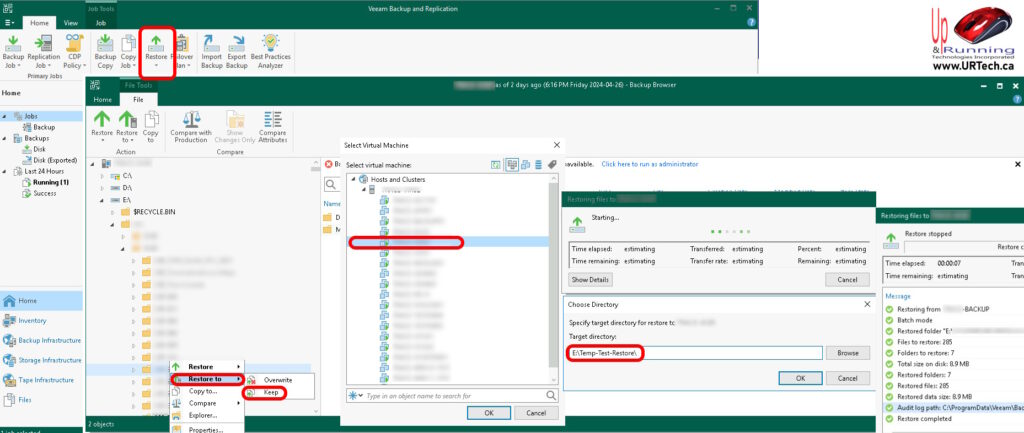If you are new to Veeam Backup and Replication, performing a RESTORE can be confusing. Veeam offers three different restore options, whose differences are not readily apparent:
- Restore: Overwrite existing data with restored data
This is a process of recovering a VM from a backup file to the original location. This operation is typically used when you need to recover from data loss or corruption in the original location. - Restore to: Copy data to a different location on the same server
This operation is used when you want to restore a backup to its original location or to a new location. The restored data replaces the existing data. This is typically used when you need to recover from data loss or corruption. - Copy to (Backup Copy): Copy data to a different location on a different server
This operation, on the other hand, is used to create a copy of existing backup data to another disk system. This is typically used for offsite storage or for maintaining a secondary copy of the backup for added redundancy. The Backup Copy Job in Veeam doesn’t simply copy a backup file from one backup repository to another. Instead, it retrieves data blocks necessary to create a restore point as of the latest point in time and copies this data to the target repository. This process can be more efficient as it only copies the changes since the last backup.
Veeam File/Folder Restore Example

In the screenshot above we chose RESTORE TO, Because we wanted the data to be on the same server but in a different location. It’s not that we don’t trust Veeam to understand its KEEP versus OVERRITE setting; it’s simply that we know nothing’s going to get destroyed if we select RESTORE TO and KEEP and then point it to a different folder path.



0 Comments